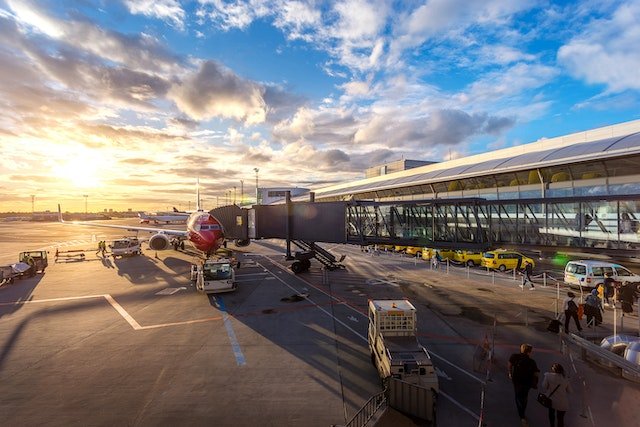In the planning and administration of airport infrastructure, efficiency and sustainability are two important considerations. Airports are faced with the dilemma of supporting growing passenger loads while reducing environmental impact as air travel continues to expand. To increase the effectiveness and sustainability of airport infrastructure, this article examines a variety of techniques and future technologies within airports that can be implemented.
Sustainable Design And Constriction
- Green Building Practises
The environmental impact of airports can be considerably reduced by including sustainable design principles throughout the development phase. Utilizing eco-friendly materials, improving energy and water efficiency, and incorporating renewable energy sources are some examples of how to do this.
- Efficient Land Use
The best utilization of the available land is essential for an effective airport infrastructure. More sustainable land use techniques can be achieved by designing compact layouts, reducing the amount of land needed, and including facilities that serve multiple purposes.
Energy Efficiency
- Renewable Energy Sources
Integrating renewable energy sources such as solar panels, wind turbines, and geothermal systems can help airports reduce their dependence on fossil fuels and lower carbon emissions. These energy sources can power airport facilities, including terminals, lighting systems, and auxiliary buildings.
- Energy Management Systems
Implementing intelligent energy management systems allows airports to monitor and optimize energy consumption. Smart systems can control lighting, heating, and ventilation based on occupancy and demand, resulting in significant energy savings.
Waste Management
- Recycling and Waste Reduction
Implementing robust recycling programs and waste reduction initiatives can minimize the environmental impact of airports. Separating and recycling materials such as plastics, paper, and metals, as well as implementing composting programs, can significantly reduce waste sent to landfills.
- Sustainable Procurement Practices
Adopting sustainable procurement practices involves selecting suppliers and materials that prioritize environmental considerations. Choosing eco-friendly products and materials, including those made from recycled or renewable resources, helps minimize the overall environmental impact of airport operations.
Water Conservation
- Efficient Water Management
Implementing water-efficient fixtures, such as low-flow toilets and faucets, and utilizing smart irrigation systems can help airports conserve water resources. Rainwater harvesting and greywater recycling systems can also be employed to reduce reliance on municipal water supplies.
- Water Treatment and Reuse
Implementing advanced water treatment technologies enables airports to treat and reuse wastewater for non-potable purposes, such as irrigation or cooling systems. This reduces the strain on freshwater resources and supports sustainable water management.
Intelligent Transportation Systems
Implementing intelligent transportation systems within airports can improve operational efficiency and reduce congestion. Automated baggage handling systems, smart parking guidance systems, and optimized traffic flow management contribute to smoother operations, reduced fuel consumption, and enhanced passenger experience.
Conclusion
Efficiency and sustainability are crucial considerations in the design and operation of airport infrastructure. By implementing sustainable design and construction practices, airports can reduce their environmental footprint. Energy-efficient systems, waste management initiatives, water conservation strategies, and intelligent transportation systems contribute to more sustainable airport operations. Embracing these practices not only benefits the environment but also improves operational efficiency, reduces costs, and enhances the overall experience for passengers and airport stakeholders. As the aviation industry continues to evolve, the pursuit of efficiency and sustainability in airport infrastructure remains essential for a greener and more sustainable future.




